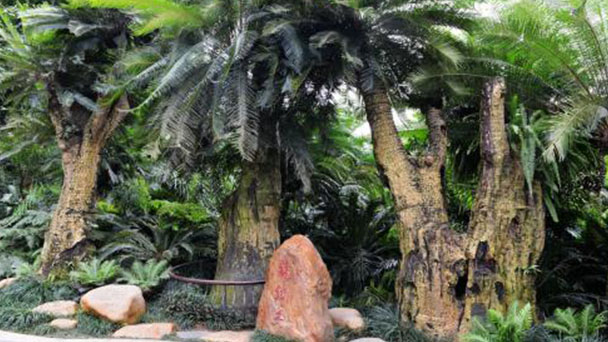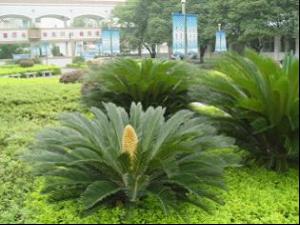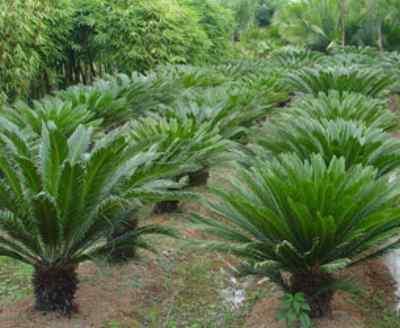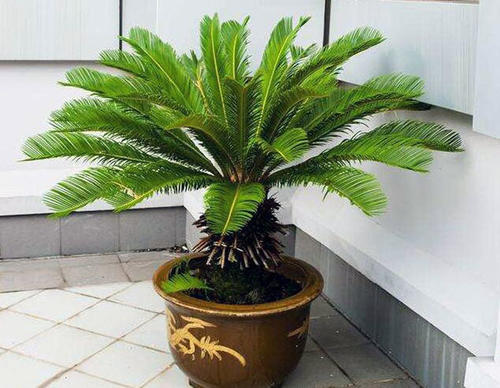Sago palm care guide
Written by Maggie
Sep 02 2021

Sago palm is a common ornamental plant in family and garden, so many people will cultivate Sago palm. However, because they do not know much about the cultivation methods and Sago palm caring tips, Sago palm will become sick or die. Today we will introduce Sago palm care guide.

Care guide for Sago palm bent
A Sago palm is usually bent because it is not growing well. You can put a shelf on the side of the tree, and then the plant will grow as the shelf rises, making it look less bent. Sago Palm is native to west Africa. It likes to grow in high temperatures and humidity. It requires a high amount of water.
Sago palm belongs to the liliaceae and is often planted as a green plant in the courtyard or along the road. Some people may ask why Sago palm bends? Sago palm bends are usually due to poor growth. You can put a shelf on the outer layer of the plant, which will allow the plant to grow up the shelf.
Sago Palm, also known as Brazilian wood, is native to west Africa. It is mostly planted in Yunnan, Guangxi, Hainan and other regions in China. Sago Palm likes to grow in a high temperature and wet environment and has a high demand for water. When planting Sago palms, water the plants as soon as possible and follow the principle of "dry and wet" when watering.
Sago palm is a light-loving plant and requires a lot of light during its growth. It is best to plant in a well-ventilated and well-lit environment. Sago Palm is resistant to high temperature and cold. It is best to control the temperature between 18 and 24 degrees in normal planting and above 5 degrees in winter planting.
Sago Palm has strict requirements on soil. It is suitable for growing in loose, fertile and well-drained sandy loam. When planting, the soil can be prepared by mixing leaf rot soil, culture soil and coarse sand. Sago palms grow quickly, so trim the plant regularly. Pruning involves removing the bare branches from the plant. Read more about how to grow and care for Sago Palm.

Care guide of Sago palm leaf tips drying
The dry tips of Sago palm leaves during planting may be caused by temperature discomfort, lack of water, excessive fertilization or excessive sunlight, which should be taken according to different circumstances. Temperature should be controlled when not in good condition. Water properly when water is scarce. Dilute the fertilizer with water when fertilizing too much. Shade properly when the light is too strong.
1. Temperature for Sago palm
Sago Palm belongs to the Liliaceae family and is often planted as an ornamental tree in flower beds. The dry tip of Sago Palm leaves may be caused by temperature discomfort. Sago Palm likes to grow in a hot environment and is extremely cold resistant. It is better to keep the indoor temperature at 18 to 24 degrees when planting.
2. Moisture for Sago palm
Sago palm likes to grow in a wet environment and has a high demand for water. Lack of water during planting can also cause leaf tips to dry out. We should give Sago palm water appropriately at this moment. When watering we can follow the principle that when dry see wet, which won’t cause waterlogging. In late growing, water can be watered according to the changes in the soil.
3. Fertilizer for Sago palm
The dry tip of Sago palm leaves during planting may also be caused by too much fertilizer. At this time, a large amount of water should be poured to dilute the fertilizer. If the symptoms cannot be alleviated by watering, it is better to replace the soil for planting. Sago Palm has a low demand for fertilizers, so it is not necessary to apply too much fertilizer to the plants for cultivation, but only appropriate fertilizer during the growing period.
4. Light for Sago palm
Sago palm is a light-liking plant. However, too much light received by the plant during planting will cause the leaf tips to dry out. In this case, the plant should be transplanted to a cool and ventilated indoor place for planting for a period of time. After Sago palm leaves return to normal, allow the plant to be properly exposed to light, but shade well when the light is strong.

Latest Updated
- Benefits of Bugleweed - 7 Science-backed Health Benefits
- Bugleweed Dangers & Side Effects - Is It Poisonous?
- How to Plant Evergreen Trees - What You Should Know
- When to Plant Evergreens - Grow Guide for Evergreen Trees
- 12 Wonderful Evergreen Shrubs for Your Garden
- 12 Popular Evergreen Plants with Pictures for Beginners
- When And How To Prune A Lilac Bush Like a Pro
- How to Grow & Care for Lilac Vine (Hardenbergia Violacea)
- Japanese Lilac Tree (Syringa Reticulata) Care & Propagation Guide
- Shumard Oak Pros and Cons - What to Know
Popular Articles
- Winter maintenance of Antirrhinum Majus
- How to Grow Terminalia Mantaly Tree
- How to Grow and Care for Crossostephium Chinense
- How to grow Antirrhinum Majus in spring
- Peristeria Elata (Dove Orchid) Profile: Info & Care Guide
- Underwatered Snake Plant (Sansevieria Trifasciata) - Signs And How To Fix
- How to Care for Brazilian Jasmine Plant (Mandevilla Sanderi)
- How to Grow & Care for Graptopetalum Purple Delight in Summer
- Rosa Chinensis (China Rose): Plant Growing & Care Tips
- How to Care for Baby Sun Rose (Aptenia Cordifolia)